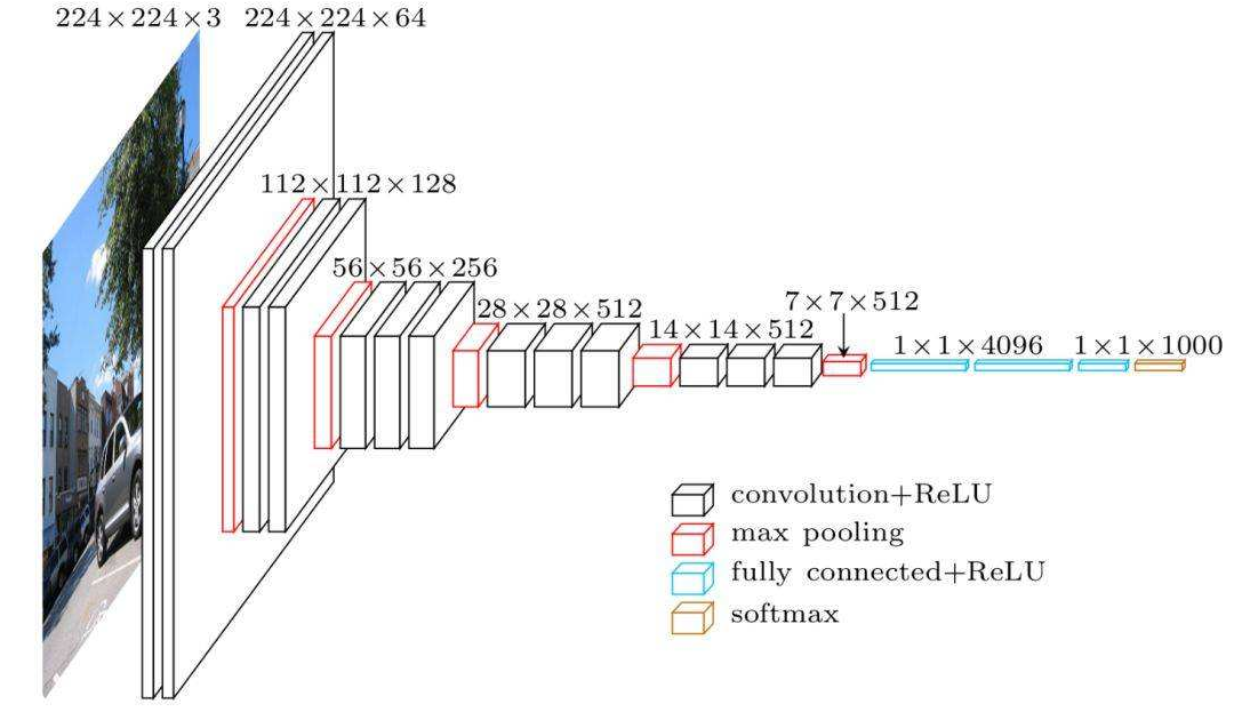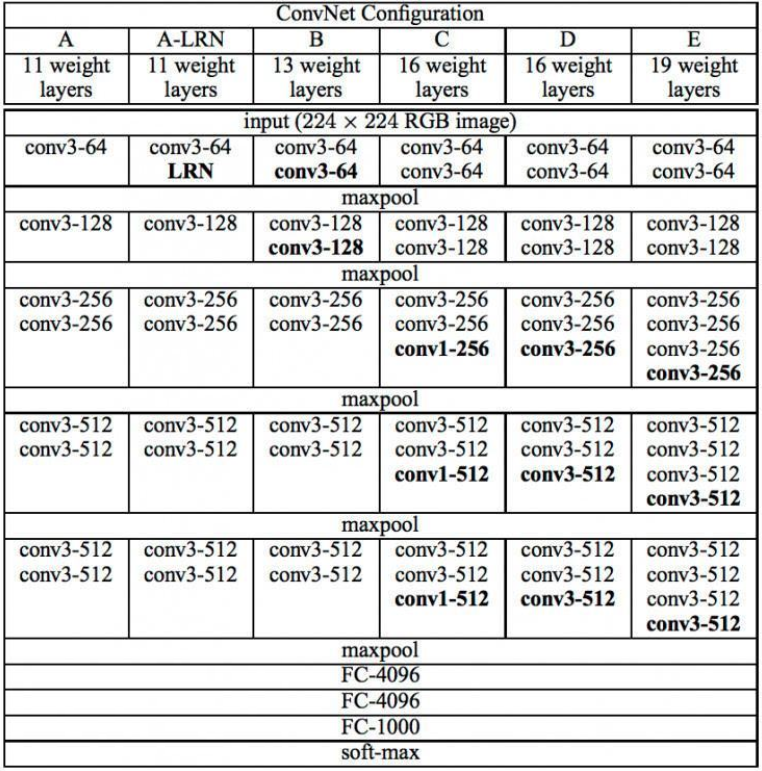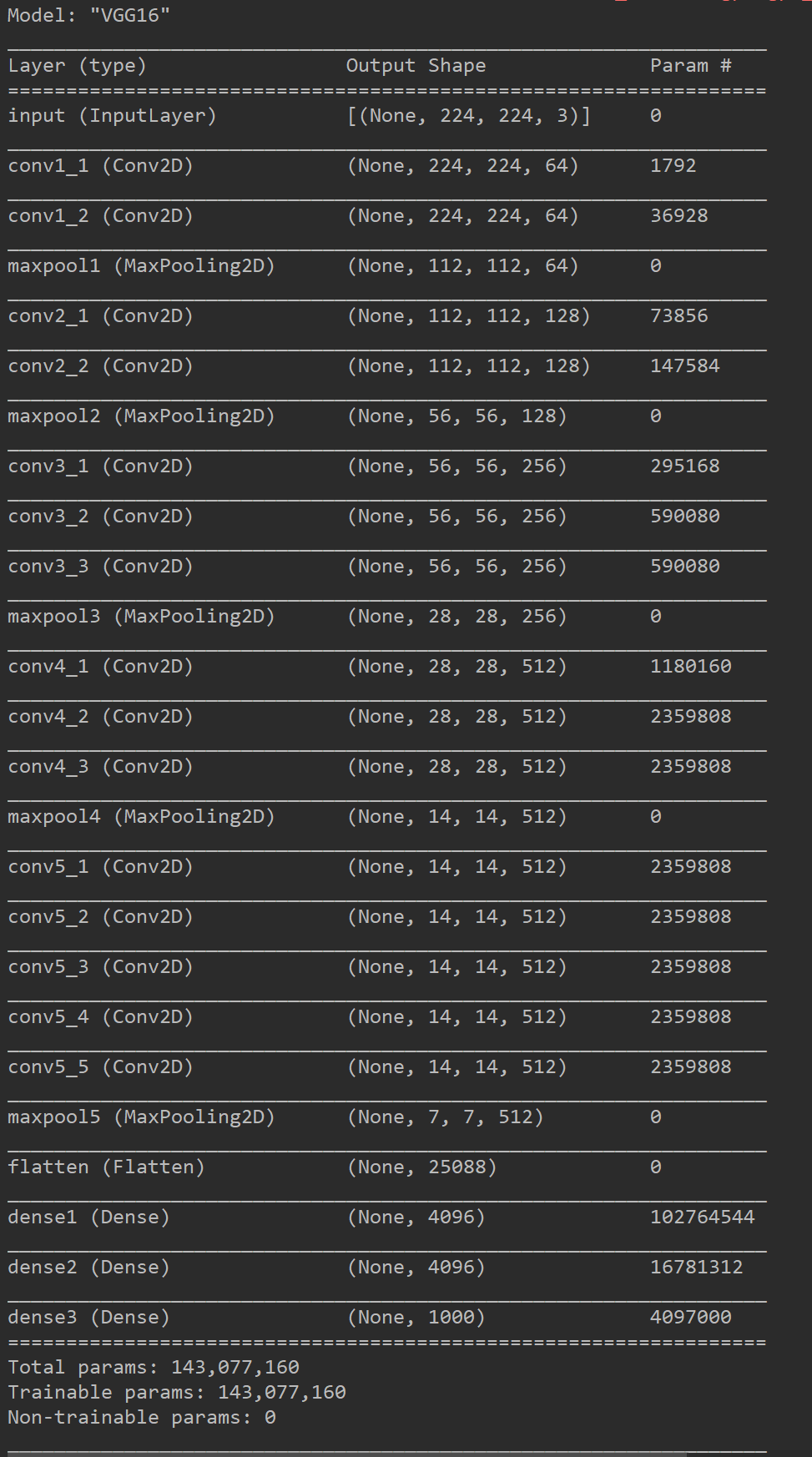背景介绍
VGG:来源于牛津大学视觉几何组Visual Geometry Group,故简称VGG,是2014年ILSVRC竞赛的第二名,是一个很好的图像特征提取模型。

VGG特点
卷积核:VGG全由3x3小卷积核构成,步长为1,填充方式为same
池化核:VGG全由2x2池化核构成,步长为2
网络层:VGG具有较深的网络层,可以根据需要进行调整
参数量:VGG具有较大参数量,主要来源于Flatten层后面的全连接层
不同尺寸VGG网络结构

VGG16图像分析

TensorFlow2.0实现
1 | from functools import reduce |

VGG小结
VGG是最简单的一种深度学习网络,也是一种非常有效的特征提取模型。从上图可以看出VGG16模型的参数量达到143M,因为特征提取时不需要后面的Dense层,可以大大降低网络的规模。因此实际任务所使用,如目标检测算法SSD的特征提取网络就是VGG。